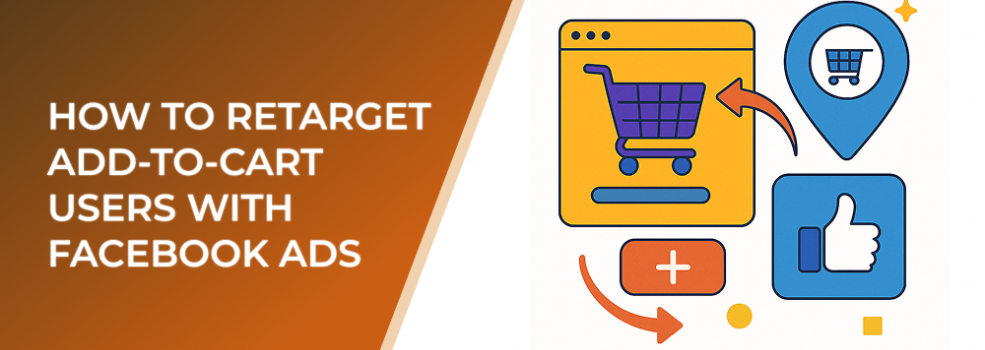Add-to-cart users are some of the most valuable audiences you can target. They’ve already shown clear intent by engaging with your product page and starting the checkout process. According to data from Barilliance, nearly 70% of online shopping carts are abandoned, but retargeting can recover up to 26% of those lost sales.
These users are not cold leads—they know your brand and your offer. What they need is a gentle nudge or reassurance that completing their purchase is worth it.
Step 1: Create a Custom Audience of Add-to-Cart Users
To start, you need to create a custom audience from your website traffic. In Facebook Ads Manager, set up a Custom Audience based on website visitors and choose the AddToCart event (assuming the Meta Pixel is properly configured on your site).
You can further refine this audience by:
-
Excluding purchasers to focus only on users who didn’t complete checkout.
-
Narrowing by recency, such as targeting users who added to cart within the last 7 or 14 days.
This segmentation ensures your ads reach users who are still in an active buying mindset.
Step 2: Design Retargeting Ad Creatives That Convert
Your retargeting creatives should focus on building trust and removing friction. Consider using:
-
Dynamic Product Ads (DPAs): These automatically show users the exact items they left behind in their cart. Facebook reports that DPA campaigns can drive up to 3x higher conversion rates compared to static ads.
-
Social proof and reviews: Display testimonials or ratings to reassure hesitant buyers.
-
Urgency triggers: Offer limited-time discounts or free shipping for a short period to encourage quick action.
-
Personalized messages: Copy that starts with lines like “Forgot something?” or “Still thinking it over?” can grab attention without being intrusive.
Step 3: Set Up Smart Frequency and Timing
Avoid showing the same ad too many times. Set a frequency cap to prevent ad fatigue and rotate visuals weekly. Ideally, you want your ad to appear 2–4 times within the first week after cart abandonment.
You can also create sequential retargeting campaigns:
-
Day 1–3: Reminder of the abandoned product.
-
Day 4–7: Highlight reviews or testimonials.
-
Day 8–14: Offer a small incentive (e.g., discount or free shipping).
This approach keeps the messaging fresh while nurturing the user toward conversion.
Step 4: Optimize and Analyze Performance
Monitor your ad metrics closely. The most important ones for retargeting include:
-
Return on ad spend (ROAS): Aim for 4x or higher with high-intent audiences.
-
Cost per purchase (CPP): Retargeting ads should have a lower CPP than prospecting ads.
-
Click-through rate (CTR): Indicates how engaging your creatives are.
Using LeadEnforce, you can build precise audience segments for retargeting or lookalike audiences of users who completed purchases after seeing your add-to-cart ads.
Step 5: Scale Winning Campaigns
Once you identify high-performing retargeting ads, gradually increase your budget and expand your audience using lookalike segments. For example, you can create a 1% lookalike audience based on your add-to-cart users to find new people with similar buying behaviors.
Keep testing creatives, placements, and ad copy to find what resonates best. Small optimizations in your retargeting funnel can make a significant difference in your overall ad performance.
Final Thoughts
Retargeting add-to-cart users is one of the most effective ways to reclaim lost revenue and improve ad efficiency. By focusing on personalization, social proof, and smart timing, you can turn nearly-forgotten carts into completed sales. When combined with LeadEnforce’s targeting and audience-building tools, your Facebook ad campaigns can reach their full potential.

